Wildflowers, Grasses and Other Nonwoody Plants
Media
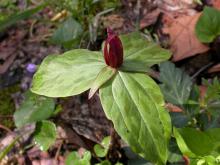
Species Types
Scientific Name
Trillium sessile
Description
The flower of wake robin, or trillium, has 3 petals and 3 sepals, and 3 leaves that subtend the solitary flower. The petal color varies in this common woodland spring wildflower, but it is most commonly brownish or maroon.
Media

Species Types
Scientific Name
Aplectrum hyemale
Description
Adam and Eve orchid is noticeable on winter woodland hikes. It is a green-and-white-striped, pleated leaf lying flat upon the dead leaves on the forest floor. Check back in May to see its flowers!
Media
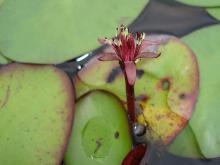
Species Types
Scientific Name
Brasenia schreberi
Description
Water shield is a long-stemmed aquatic plant with floating oval leaves that resemble small water lily leaves, only without a split. The stems and lower leaf surfaces have a thick, jellylike coating.
Media
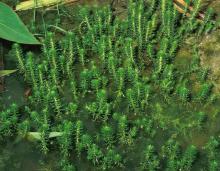
Species Types
Scientific Name
Myriophyllum spp.
Description
Water milfoils are feathery aquatic plants that grow rooted in shallow water. Their tips emerge above the waterline and bear bladelike, toothed leaves.
Media

Species Types
Scientific Name
Thaspium trifoliatum
Description
One of our more challenging plants to identify, meadow parsnip looks an awful lot like golden Alexanders. But you can do it! Look closely at the flower clusters and at the edges of the leaves, and then check the seeds.
Media
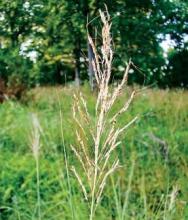
Species Types
Scientific Name
Bothriochloa bladhii
Description
Causasian bluestem and the closely related yellow bluestem are both aggressive, weedy degraders of pasturelands that escape cultivation and endanger native habitats. Learn more about these Old World grasses, and please don’t plant them!
Media

Species Types
Scientific Name
Sorghum halepense
Description
Johnson grass is a native of the Mediterranean that is invasive in our country. It’s a weed that infests cropland and degrades native ecosystems, and heavy infestations are found in all the major river bottoms of Missouri.
Media
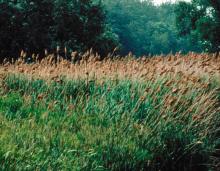
Species Types
Scientific Name
Phragmites australis australis
Description
Common reed is both native and exotic, but it’s the exotic subspecies that has become an invasive problem. Taking over wetlands with its dense stands, it changes the plant and animal communities and even the way the water flows.
Media
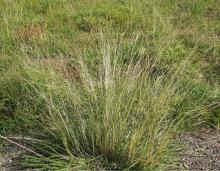
Species Types
Scientific Name
Bothriochloa ischaemum
Description
Yellow bluestem is a nonnative, aggressive, weedy degrader of pasturelands that escapes cultivation and endangers native habitats. It blooms in Missouri in late June to July, far earlier than our native bluestems.
Media

Species Types
Scientific Name
Hexalectris spicata (syn. Bletia spicata)
Description
Crested coral root is an orchid that lacks chlorophyll, so none of it is green. It obtains nutrients from fungi and decaying organic matter. Compared to our other coral roots, it is taller and has larger flowers. It grows in Ozark habitats.
See Also
About Wildflowers, Grasses and Other Nonwoody Plants in Missouri
A very simple way of thinking about the green world is to divide the vascular plants into two groups: woody and nonwoody (or herbaceous). But this is an artificial division; many plant families include some species that are woody and some that are not. The diversity of nonwoody vascular plants is staggering! Think of all the ferns, grasses, sedges, lilies, peas, sunflowers, nightshades, milkweeds, mustards, mints, and mallows — weeds and wildflowers — and many more!





















